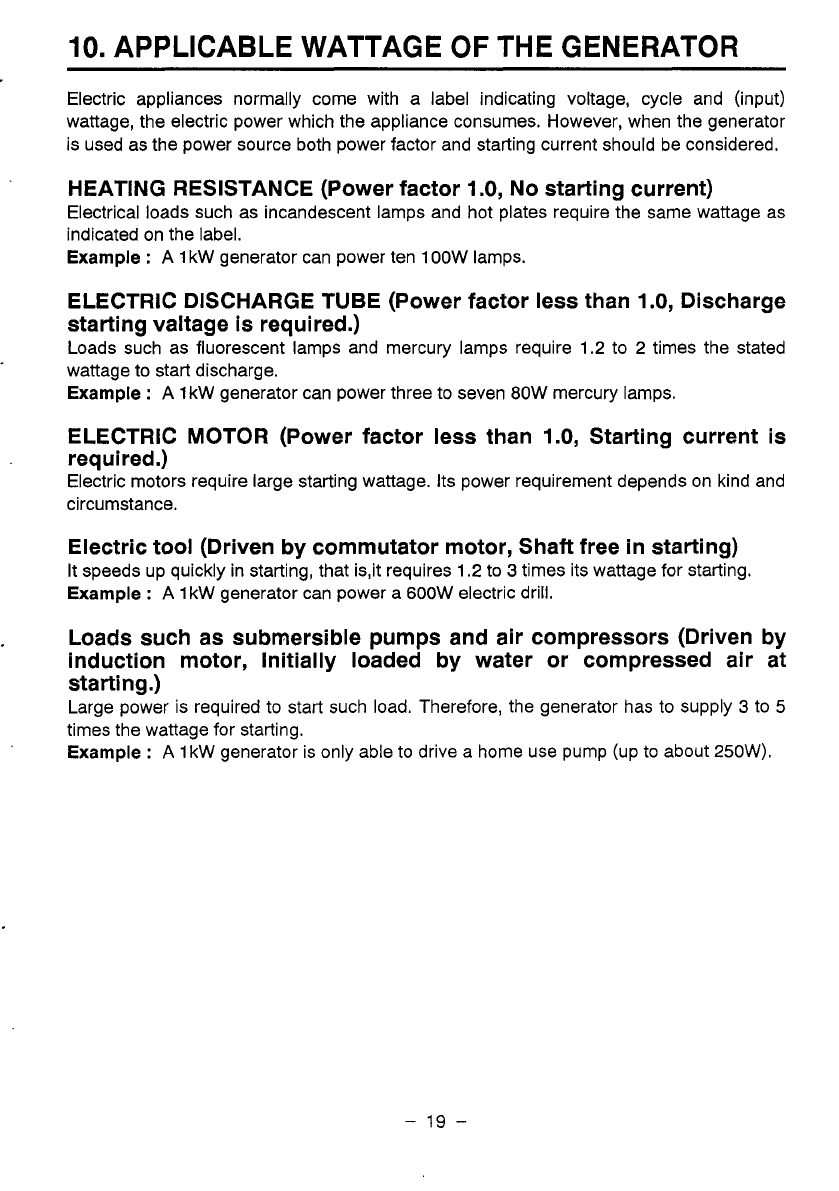
IO.
APPLICABLE WATTAGE
OF
THE GENERATOR
Electric appliances normally come with a label indicating voltage, cycle and (input)
wattage, the electric power which the appliance consumes. However, when the generator
is used as the power source both power factor and starting current should be considered.
HEATING RESISTANCE (Power factor
1
.O,
No
starting current)
Electrical loads such as incandescent lamps and hot plates require the same wattage as
indicated on the label.
Example
:
A
1
kW generator can power ten
1
OOW lamps.
ELECTRIC DISCHARGE TUBE (Power factor less than
1
.O,
Discharge
starting valtage is required.)
Loads such as fluorescent lamps and mercury lamps require
1.2
to
2
times the stated
wattage to start discharge.
Example
:
A
1
kW generator can power three
to
seven 80W mercury lamps.
ELECTRIC MOTOR (Power factor less than
1.0,
Starting current is
required.)
Electric motors require large starting wattage. Its power requirement depends on kind and
circumstance.
Electric tool (Driven by commutator motor, Shaft free in starting)
It speeds up quickly in starting, that is,it requires
1.2
to
3
times its wattage for starting.
Example
:
A
1
kW generator can power a 600W electric drill.
Loads such as submersible pumps and air compressors (Driven
by
induction motor, Initially loaded by water or compressed air at
starting
.)
Large power is required to start such load. Therefore, the generator has to supply
3
to
5
times the wattage for starting.
Example
:
A
1
kW generator is only able to drive
a
home use pump (up to about 250W).
-
19
-


















